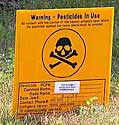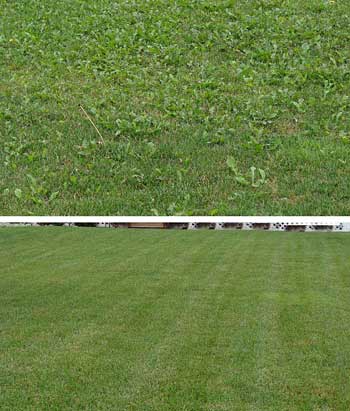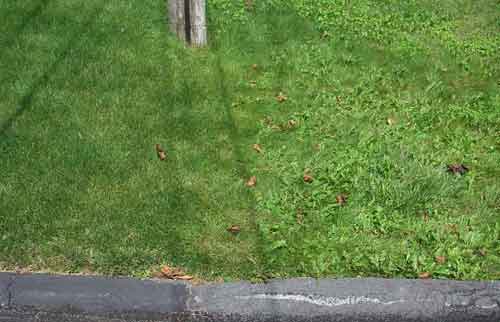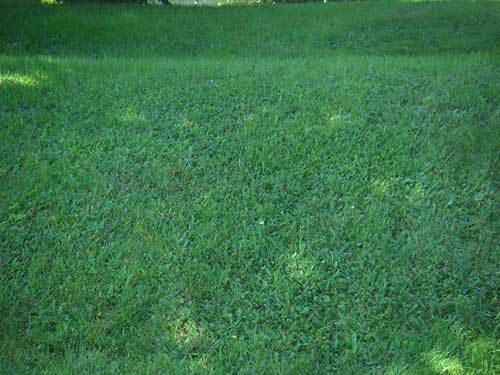VI CONTROL: Overview Acute Cultural Redesign
VII GUIDELINES | VIII PHOTOS | IX REFERENCES
QG CHINCH NOW
| |||||||||||||
2. Weeds and No Weeds (2007)
* There was little evidence of chinch damage anywhere, perhaps because of the well distributed precipitation and overall wet summer this year, but there may be more involved - see Update: Use of Pyrethrins and Neem Oil to Control Chinch Bug. Click on images for larger versions
Top of Page I HOME | II BIOLOGY | III MONITORING | IV FACTORS | V PERMITTED MATERIALS VI CONTROL: Overview Acute Cultural Redesign VII GUIDELINES | VIII PHOTOS | IX REFERENCES QG CHINCH NOW Site posted 5 Apr. 2004
This page posted 7 Apr. 2004 Page modified 16 May 2010. |

























